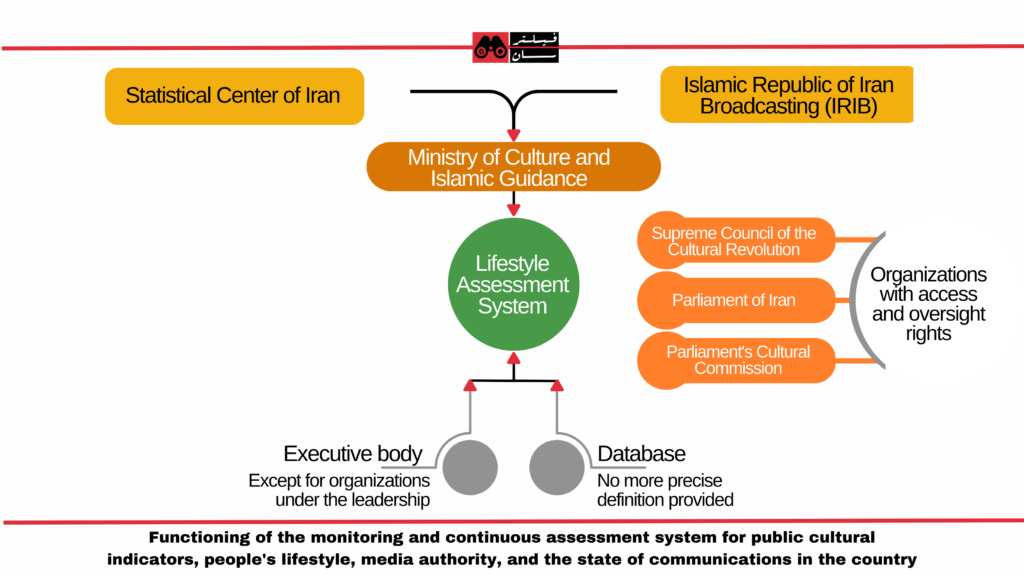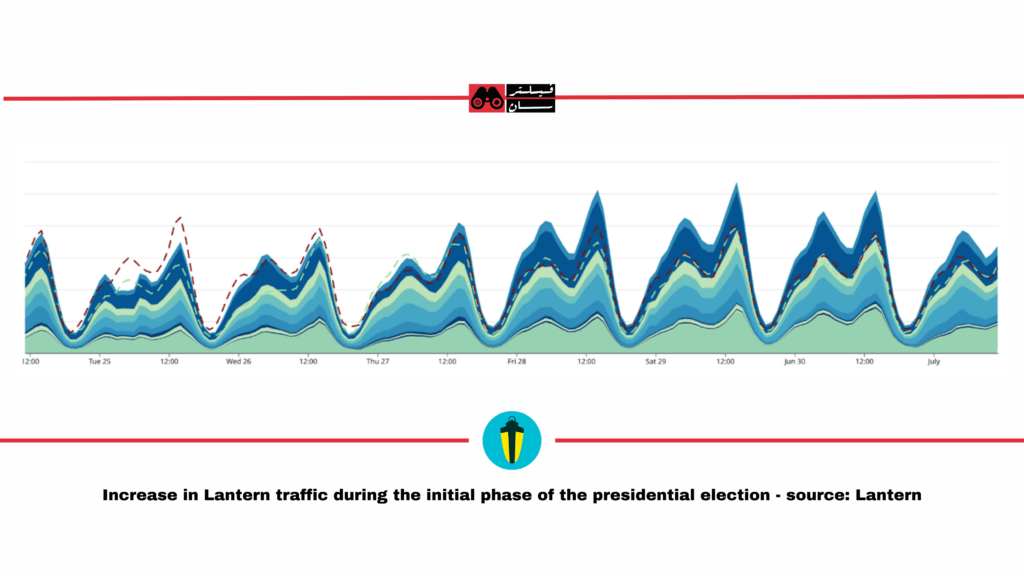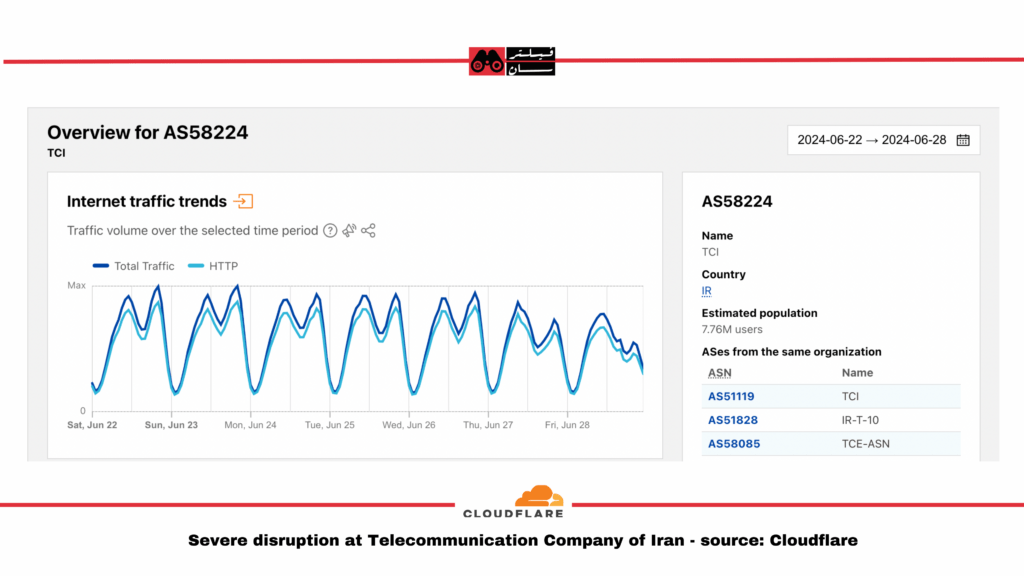The seventh development plan law is of utmost importance among all internet policies in Iran. Masoud Pezeshkian, the president-elect, has repeatedly emphasized his commitment to implementing this plan during presidential debates and in his announcements. Therefore, over the next four years, the situation of digital rights and the right to internet access can be examined from this perspective.
Although this plan includes beneficial clauses such as increasing access to fiber optics for 20 million points, which can expand network access, the core of the plan focuses on extensive monitoring of citizens’ daily activities and lifestyles. It emphasizes the expansion of native software infrastructures at the access layer of the national information network, including the development of messaging apps, search engines, and operating systems. The plan also outlines the stratification of the network and the segregation of citizen access based on age, gender, and occupation. Additionally, it involves designing a data governance system, creating a judicial system for cyberspace led by the judiciary, and designing a law enforcement system for cyberspace (in collaboration with the Revolutionary Guards and the Ministry of Intelligence, following the approval of the Supreme Council of Cyberspace).
On the other hand, given the emphasis on two specific clauses from the strategic document of the Islamic Republic in cyberspace, the Pezeshkian government will likely impose further restrictions on global internet traffic. The first clause calls for competitive tariffing for access to domestic application services and content to be at least double, and access to basic services of the national information network to be at least three times more competitive than foreign counterparts. The second clause specifies a qualitative advantage in access to services and domestic content five times superior to foreign content services. Consequently, the government must reduce international bandwidth and increase the cost of global internet access to meet these targets.
In simpler terms, given the repeated emphasis by Masoud Pezeshkian, the president-elect, during his election campaigns about implementing the seventh development plan, we will witness increased restrictions and surveillance on Iranian citizens over the next four years.
The most important issues related to digital rights and internet access in this law, which was finalized and notified in July 2024, include:
Lifestyle Monitoring System
This system, officially named “System for Monitoring, Surveillance, and Continuous Assessment of Public Culture Indicators, People’s Lifestyle, Media Authority, and Communication Status in the Country”, is detailed as follows: The Ministry of Culture is responsible for its construction in collaboration with the IRIB (Islamic Republic of Iran Broadcasting) and the Statistical Center of Iran, under the supervision of the Supreme Council of the Cultural Revolution.
Simply put, this system is tasked with collecting and storing data from government executive devices, except for institutions directly under the supervision of the leader.
The purpose of creating such a system is to collect all information about the daily lives of citizens by governmental bodies such as the Ministry of Culture, IRIB, Statistical Center, and part of the Supreme Council of the Cultural Revolution, as well as private sector entities such as ride-sharing apps, payment service providers, navigation apps, and generally any private application capable of recording data on users’ daily behaviors.
The collected data is intended to be used for continuous monitoring, surveillance, assessment, and future research concerning “public culture indicators, people’s lifestyles, media authority, and communication status” as well as “continuous monitoring, surveillance, and assessment of public culture indicators, level of religiosity, spirituality, ethics, and lifestyle of the people with an Iranian Islamic approach, and continuous assessment of values, tendencies, and cultural and social institutions of the Iranian society.”

Development of the National Information Network
The development of the National Information Network is one of the key sections of this plan, which can be categorized into three main areas:

Realization of the Strategic Document Objectives of the Islamic Republic in Cyberspace
This document was approved during the eighty-fourth meeting of the Supreme Council of Cyberspace chaired by Ebrahim Raisi in August 2022. The main objectives to be achieved by 2031 based on this document include:
- Completing and updating the National Information Network with a priority on providing basic cyberspace services (messaging, search engines, operating systems, and data center services).
- Designing a healthy, useful, and secure cyberspace system (protection of children and families).
- Designing a data governance system.
- Designing a judicial system for cyberspace by the judiciary.
- Designing a law enforcement system for cyberspace (in collaboration with the Revolutionary Guards and the Ministry of Intelligence, following the approval of the Supreme Cyberspace Security Commission).
Realization of the Objectives of the Master Plan and Architecture of the National Information Network
The master plan and architecture of the National Information Network were approved in October 2020 by the Supreme Council of Cyberspace. This document outlines the responsibilities of various governmental agencies for the full implementation of the National Information Network by 2025.
The most important sections of this plan, which complement the strategic document of the Islamic Republic in cyberspace, are as follows:
- Provision of a secure domestic operating system for mobile phones.
- Creation of a domestic browser.
- Establishment of a domestic email service.
- Development of a domestic search engine (jooyeshgar).
- Competitive tariffing in access to domestic application services and content, ensuring at least double the cost compared to foreign services, and access to basic services of the National Information Network at least three times more competitive than foreign alternatives.
- Providing a qualitative advantage in access to domestic services and content, five times superior to that of foreign content services.
- Mandatory user identity registration.
The network status: Uninterrupted until the night of the elections
Over the past month, from May 2nd to June 30th, 2024, the network did not face severe disruptions. However, this situation changed as the days neared the presidential election.
On the night of June 28, 2024, coinciding with the eve of the presidential elections, the Arvan Cloud charts, which report the status of data centers in Iran, along with the charts from IODA and Cloudflare, showed significant disruptions in Iran’s communications.
This situation progressed to the extent that the traffic of the Telecommunication Company of Iran on the night of June 29, 2024, nearly reached a complete cutoff, and on June 29 and 30, it was disrupted for approximately 7 hours.
Field investigations by Filterban also indicate that during this period, the networks of Iran’s mobile operators, Irancell and Rightel, experienced disruptions, and mobile users faced issues accessing messaging apps like WhatsApp as well as VPNs.
Shargh website, quoting sources inside Iran on the night of June 29, 2024, reported that access to VPNs was disrupted on the election night.
Information provided by the experts of the free VPN service Lantern, shared with Filterban, shows that in the final hours of Thursday, June 29, there was a 35% increase in Lantern VPN traffic compared to the previous day.
At the same time, Cloudflare Radar showed a negative and decreasing trend in Iran’s network traffic. In other words, the decrease in Iran’s traffic on Cloudflare coincides with the increase in Lantern’s traffic.
The person responsible for the Lantern network review team commented to Filterban:
“Since many circumvention tools use Cloudflare services, which were disrupted, this premeditated disruption means that probably other VPNs based on Cloudflare and their protocols were disrupted, forcing users to turn to Lantern. This is why there was an increase in traffic.”

